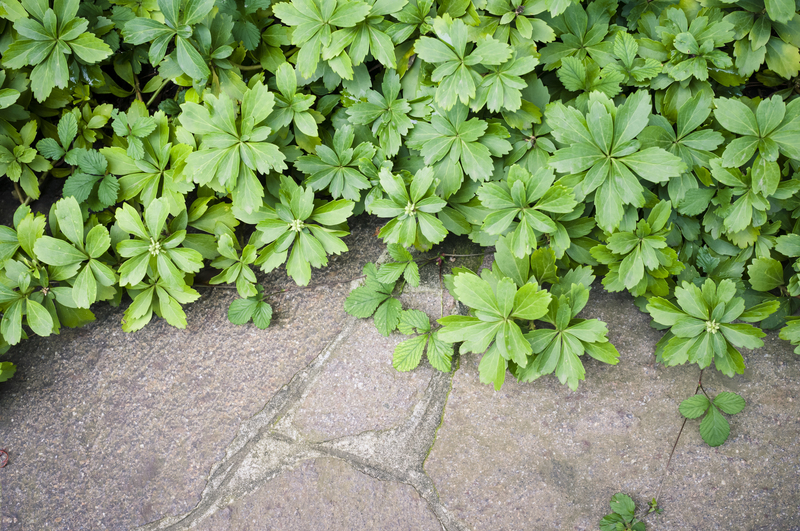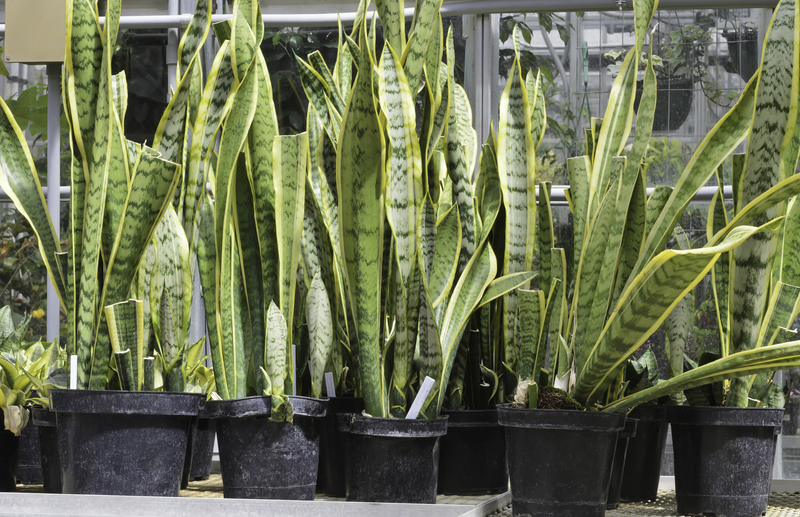Key Gardening Tools Every Enthusiast Should Have
Posted on 03/10/2025
Key Gardening Tools Every Enthusiast Should Have
Gardening is more than just a hobby--it's a passion for many and a wonderful way to connect with nature, relax, and benefit from the outdoors. Whether you're a novice planting your first flowers, a vegetable gardener hoping for a bountiful harvest, or a seasoned green thumb maintaining a lush landscape, having the right gardening tools can make all the difference. Not only do the essential garden tools help you work more efficiently, but they also help ensure the health and beauty of your plants. In this comprehensive guide, we'll explore the key gardening tools every enthusiast should have, including their uses, tips for selection, and advice on care and maintenance.
Why Are Quality Garden Tools Essential?
Selecting the right garden tools can spell the difference between frustration and joy in the garden. High-quality gardening equipment allows for precision, minimizes effort, and protects your plants from accidental damage. Furthermore, sturdy tools last longer, perform better, and often reduce the risk of injury.
- Efficiency: Great tools help you work faster and smarter.
- Comfort: Ergonomic handles and lightweight materials prevent strain and fatigue.
- Plant Health: Sharp, clean blades make tidy cuts, supporting plant healing.
- Durability: Well-made tools save money in the long run by reducing replacements.
Essential Gardening Tools for Every Enthusiast
Whether you have a compact balcony garden or a sprawling backyard, there are certain tools that every gardener should keep within arm's reach. Below, we break down the crucial gardening implements to cover all basic gardening needs.
1. Hand Trowel
A hand trowel is one of the most versatile pieces of gardening equipment. Ideal for digging, transplanting seedlings, scooping soil or compost, and even weeding, a trowel is a trusted companion for small-scale garden tasks.
- Material: Look for stainless steel blades; these resist rust and stay sharp.
- Handle: Ergonomic, cushioned handles increase comfort, especially during prolonged use.
2. Pruning Shears (Secateurs)
No gardener's toolkit is complete without a pair of pruning shears. These help keep plants healthy by trimming away dead or overgrown stems and encouraging new growth.
- Bypass pruners: For precise, clean cuts of live stems and branches.
- Anvil pruners: Best for cutting dry, woody stems.
- Maintain blades by regularly cleaning and sharpening to avoid plant damage.
Tip: Invest in a quality set with spring-loaded handles to reduce hand fatigue.
3. Garden Fork
A garden fork is essential for turning, loosening, and aerating soil. Its robust tines also make it invaluable for breaking tough ground or mixing compost into beds.
- Look for stainless steel or forged steel for durability.
- Choose a fork size appropriate for your typical gardening tasks (border fork for smaller spaces).
4. Spade
The classic spade--with its flat, square blade--is perfect for digging, edging beds, transplanting shrubs, and chopping roots. Together with a fork, it forms the backbone of heavy-duty garden work.
- Material: Steel blades tend to be stronger and longer-lasting than aluminum or plastic.
- Handle length: Match to your height for maximum leverage and comfort.
Pro Tip: Spades with treaded tops put less pressure on your foot, making digging easier.
5. Garden Hoe
Whether cultivating soil, removing weeds, or creating furrows for seeds, the garden hoe is a multifunctional implement. Several types exist:
- Draw hoes (straight edge): Ideal for chopping and pulling soil.
- Stirrup hoes: Easy, back-and-forth motion makes weeding swift and effortless.
- Warren hoes: Pointed shape is useful for creating seed drills and trenches.
6. Watering Can
A watering can is a must-have for controlling the flow and volume of water applied, especially in areas where hoses may not reach or delicate seedlings are present. Choose one with a detachable rose for a fine, gentle sprinkle, preserving the integrity of young plants.
7. Garden Gloves
Protecting your hands is vital. The right pair of gardening gloves guards against thorny stems, blisters, and hazardous substances in the soil. Opt for breathable, flexible materials that still offer robust protection.
- For heavy-duty work, choose leather gloves.
- For delicate tasks, nitrile or latex-coated gloves provide sensitivity and grip.
8. Rake
A garden rake is crucial for leveling soil, removing debris, and preparing beds for planting. Adjustable and lightweight rakes are also helpful for gathering leaves and clippings.
- Bowed rakes: Great for tougher jobs like grading soil and spreading mulch.
- Leaf rakes: Made of lightweight plastic or metal, ideal for gathering leaves and grass.
9. Wheelbarrow or Garden Cart
For larger gardens, a wheelbarrow or garden cart saves lots of time and effort. Easily transport soil, plants, mulch, compost, or garden waste. Look for puncture-resistant tires and sturdy frames.
10. Garden Knife or Hori Hori
The Japanese Hori Hori--or "soil knife"--is a versatile, multipurpose tool. With a sharp, serrated edge on one side and a straight edge on the other, it's perfect for cutting roots, opening bags, dividing perennials, and general digging.

Additional Useful Garden Tools for Enthusiasts
While the basics will get most jobs done, true gardening aficionados may appreciate these supplementary tools for added efficiency and pleasure:
- Loppers: Extend your reach for thicker branches and shrubs.
- Hand Weeder: Target nuisance weeds without disturbing nearby plants.
- Soil pH Meter/Test Kit: Optimize your soil for different plant types.
- Plant Supports and Ties: Stake tomatoes, beans, or tall flowers.
- Garden Scissors: For deadheading, harvesting herbs, and floral arrangements.
- Garden Kneeler or Pad: Reduce knee and back strain during long weeding sessions.
- Sprayers: Apply fertilizers, pesticides, or foliar feeds evenly.
How to Choose the Best Gardening Tools
Selecting the best gardening equipment is a personal decision that depends on the size of your garden, the types of plants you grow, and your physical abilities. Consider the following before making a purchase:
- Material Quality: Stainless steel and high-carbon steel resist rust and wear.
- Ergonomics: Tools designed to fit your hand will reduce tension and prevent repetitive strain injuries.
- Weight: Heavier tools may be durable, but lightweight versions are easier to use for long periods.
- Handle Length: Long-handled tools offer more leverage but may be unwieldy in small spaces.
- Warranty and Brand Reputation: Trusted brands often offer better quality control and customer support.
Maintenance and Storage
To extend the life of your gardening tools and keep them working efficiently:
- Clean after every use--remove dirt, sap, and moisture.
- Sharpen blades and edges regularly for precise cuts.
- Store tools in a dry, sheltered space, such as a shed or garage.
- Oil metal parts to prevent rust and corrosion.
- Check handles periodically for splinters or cracks and repair or replace as needed.
A little care goes a long way in ensuring your garden tools last for seasons to come.
Eco-Friendly and Modern Gardening Tools
As sustainability becomes increasingly important to gardeners, consider investing in eco-friendly gardening tools. Many manufacturers offer products made with recycled materials, responsibly harvested wood, or using solar-powered operation. Rechargeable battery-operated tools, such as trimmers and blowers, reduce emissions and can make bigger jobs more manageable.
- Choose hand tools over power tools for small jobs to conserve energy.
- Opt for tools with wooden handles made from certified sustainable sources.
- Dispose of and recycle old tools responsibly.
Gardening Tool Safety Tips
Your safety is as crucial as the health of your plants. Always:
- Wear gloves and eye protection when trimming, digging, or using chemicals.
- Keep blades sharp and in good condition to reduce accidents.
- Store tools out of reach of children.
Remember, well-maintained and properly used gardening tools bring years of enjoyment and success in your garden projects.

Conclusion: Equip Yourself for Garden Success
Whether you're just starting or looking to upgrade your collection, having the key gardening tools every enthusiast should have ensures your garden thrives with less effort and more enjoyment. From the ever-reliable trowel and sturdy garden fork to the indispensable pruning shears and watering can, these essentials empower you to plant, cultivate, prune, and harvest confidently.
Remember that quality matters--invest in robust, well-designed tools and maintain them well for reliable use season after season. As your garden grows, so will your toolkit, embracing new technology and eco-friendly alternatives for a more sustainable and rewarding gardening experience.
Happy gardening!
Frequently Asked Questions About Gardening Tools
- What brands are best for gardening tools?
Many experienced gardeners favor brands such as Felco, Fiskars, Spear & Jackson, and Burgon & Ball for their durability and ergonomic designs. - How do I prevent my garden tools from rusting?
Clean your tools after use, dry them thoroughly, and occasionally apply a light coat of oil on metal parts. - Are expensive garden tools worth the investment?
In most cases, yes. Higher-quality tools last longer, perform better, and can save you money in the long run by reducing replacements and repairs. - What are the best starter tools for a beginner gardener?
A hand trowel, pruning shears, spade, garden fork, and watering can are perfect to start with. - Should I buy manual or powered gardening tools?
Manual tools are sufficient for most home gardens, but powered options (battery or electric) are useful for larger properties or those physically limited.
For more tips and insights, explore our other articles on efficient gardening, eco-friendly practices, and advanced landscaping tools!

